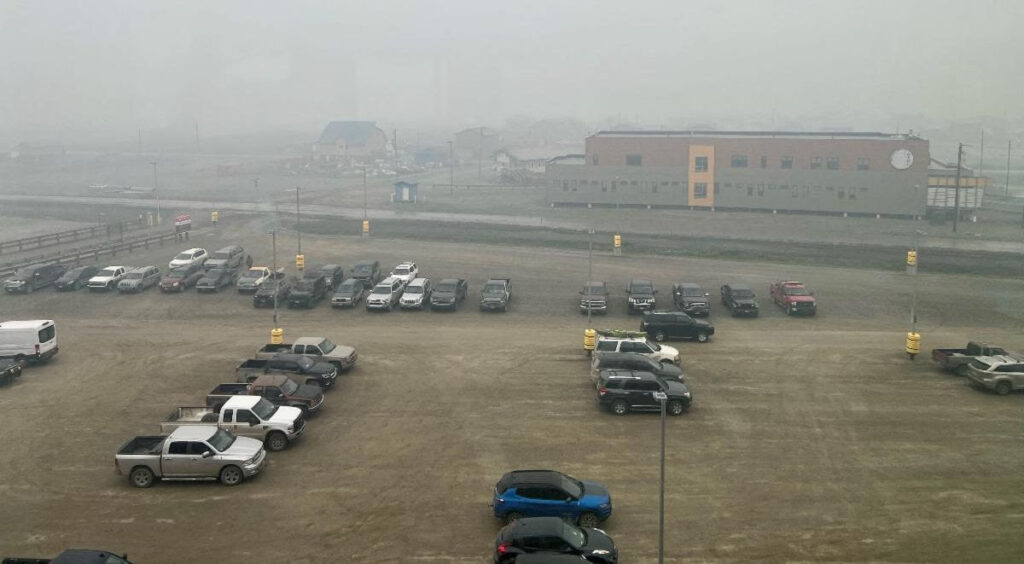At the beginning of July, parts of Western Alaska and Nome were blanketed in smoke, reducing air quality to hazardous levels. The wildfires that caused smoky conditions for up to 15 hours that day were burning more than 400 miles south of Nome. So how did the smoke coverage get so dangerous?
“It’s like you’re in a wood stove, that’s what this was like,” climatologist Rick Thoman explained.
Thoman, with the Alaska Center for Climate Assessment and Policy, says multiple fires were burning on July 1 near Lake Illiamna outside of Dillingham, more than 400 miles from Nome. These strong blazes were the source of the smoke that reached Western Alaska.
“This started out as two separate fires. The Kokyuli River fire was the easternmost one. Pike Creek was the western fire. And by June 30 they had burned together,” Thoman said.
Smoke from those wildfires hit Aniak the worst but also affected Nome and several communities in the Eastern Norton Sound like Mountain Village, St. Michael, Unalakleet, and Golovin on July 1.
As the smoke spread further north into the Chukchi Sea and Bering Strait that day, Thoman said air quality conditions in Nome deteriorated.
“In Nome, from the hospital here, at about 9:30 a.m. it was at 701 AQI (Air Quality Index). For reference, that is higher than any of the sights around Fairbanks have gotten this summer,” Thoman said. “But this is way up in the retched air quality… A health warning of emergency conditions.”
This smoke event in Nome and Western Alaska was the culmination of a few different factors, including the smoke being trapped between the ground and up to 5,000 feet in very dry air. The roaring fires that burned strong for a couple days, the transport of the smoke towards the Seward Peninsula, and the cap of air pressure under 5,000 feet in the atmosphere all mixed together to create the main ingredients for this smoke event Thoman said.
“Nome had such horrifically bad smoke, it wasn’t able to disperse into the middle layers of the atmosphere. It all got trapped on the ground,” he said. “So really this is the key as to why it was so so awful.”
Several local businesses like Kawerak and Norton Sound Health Corporation shut their doors that day and Nome’s Bering Air office had to cancel flights due to poor visibility. Fortunately the smoke cleared out of Western Alaska by the next morning and air quality returned to normal.
Smoke of this severity level has never been documented in Nome before this month, and it is unique that the fire was more than over 400 miles away. During last week’s Strait Science presentation, Thoman discussed a comparable smoke event that impacted Nome in the summer of 1977. He said a similar event happened in the summer of 1977, when a wall of smoke covered the Bering Sea coastal town for quite a few hours, preventing flights from taking off and landing. However, that was due to local wildfires burning on the Seward Peninsula — not blazes hundreds of miles away.
Image at top: Smoke blanketed Nome for most of the day on July 1st, 2022. Photo from Maggie West of Norton Sound Health Corporation, 2022.





